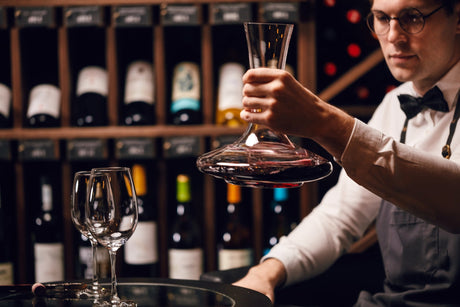
Mastering The Art of Decanting Wine: A Beginner's Guide
Don't be intimidated by decanting wine - it's not just for snobs! Learn why and how to do it with this fun, beginner-friendly guide from Your Wines. Cheers to better-tasting...
Jean Paul DeVille
Jean-Paul DeVille Millesime Brut 2012 (12 Bottles)
Jean Paul DeVille
Jean-Paul DeVille Quinte Essences Extra Brut 2014 (12 Bottles)
Jean Paul DeVille
Jean-Paul DeVille Opalis Blanc de Blanc Brut NV (12 Bottles)
Jean Paul DeVille
Jean-Paul DeVille Sappheiritos Rose Brut NV (12 Bottles)
Jean Paul DeVille
Jean-Paul DeVille Agape Brut NV (12 Bottles)
Jean Paul DeVille
Jean-Paul DeVille Revelatio Extra Brut NV (12 Bottles)
Jean Paul DeVille
Jean-Paul DeVille Saecularis Sec NV (12 Bottles)
Jean Paul DeVille
Jean-Paul DeVille Helios Carte d'Or Brut NV (12 Bottles)
Jean Paul DeVille
Jean-Paul DeVille Carte Noire Grand Cru Brut NV (12 Bottles)
Champagne Vollereaux
Champagne Vollereaux Premier Cru-Celebration Sleeve NV (12 Bottles)
Champagne Vollereaux
Champagne Vollereaux Cuvée Marguerite Brut 2011 (12 Bottles)
Champagne Vollereaux
Champagne Vollereaux Rosé de Saignée Brut NV (12 Bottles)
Champagne Vollereaux
Champagne Vollereaux Blanc de Blancs Brut NV (12 Bottles)
Champagne Vollereaux
Champagne Vollereaux Brut Reserve NV (12 Bottles)
Champagne Vollereaux
Champagne Vollereaux Brut Reserve 375ml NV (12 Bottles)
Charles Heidsieck
Charles Heidsieck Blanc des Millénaires, Reims 2007 (12 bottles)
Charles Heidsieck
Charles Heidsieck Blanc des Millénaires, (Gift Box) Reims 2007 (12 bottles)
Charles Heidsieck
Charles Heidsieck Vintage Rosé, Reims 2012 (12 bottles)
Charles Heidsieck
Charles Heidsieck Vintage Brut, Reims 2013 (12 bottles)
Charles Heidsieck
Charles Heidsieck Blanc de Blanc, Reims NV (12 bottles)
Charles Heidsieck
Charles Heidsieck Rosé Réserve, Reims NV (12 bottles)
Charles Heidsieck
Charles Heidsieck Brut Réserve, (Gift Box) Reims NV (12 bottles)
Charles Heidsieck
Charles Heidsieck Brut Réserve, Reims NV (12 bottles)
Chain of Ponds
Chain of Ponds 'Novello' Brut Cuvee NV (12 bottles)
Q: What defines Champagne as a sparkling wine, and what makes it unique?
A: Champagne is a prestigious sparkling wine from the Champagne region in France. The traditional production method, stringent regulations, and exclusive use of specific grape varieties are what sets it apart.
Q: What is the significance of the Champagne region in France in the world of sparkling wines?
A: The Champagne region in France is the birthplace of Champagne. Its cool climate and chalky soils contribute to the unique terroir that produces exceptional sparkling wines. Only wines produced here can legally bear the "Champagne" label.
Q: Is there a distinction between Champagne and French Champagne?
A: No, the terms "Champagne" and "French Champagne" are often used interchangeably. All Champagne comes from the Champagne region in France, and French wine regulations protect the name.
Q: What are some considerations for finding the best Champagne, and are there specific brands to explore?
A: The "best" Champagne is subjective and depends on personal taste preferences. Reputable Champagne houses include Dom Pérignon, Moët & Chandon, Veuve Clicquot, and Krug. We’d like to present some lesser-known, but outstanding value brands like Jacquart, Laurent-Perrier, and Ayala. Explore different styles, from Brut to Rosé, to find your favourite.
Q: What is the origin of Champagne, and why is it specific to the Champagne region?
A: Champagne is specifically from the Champagne region in northeastern France. The region's unique terroir, along with centuries of winemaking expertise, contributes to the distinct character of Champagne.
Q: What grape varieties are used to make Champagne?
A: Chardonnay, Pinot Noir, and Pinot Meunier are the primary grape varieties used in Champagne production. The combination of these grapes, along with the winemaking process, influences the flavour profile of Champagne.
Q: What is the traditional method used to make Champagne?
A: Champagne is made using the traditional method, also known as the méthode champenoise. After the initial fermentation, the wine undergoes a second fermentation in the bottle, creating carbonation. The spent yeast cells are then removed through a process called disgorgement.
Q: What are the main types of Champagne, and how do they differ?
A: The main types of Champagne include Brut (dry), Extra Brut (very dry), Sec (slightly sweet), Demi-Sec (sweet), and Rosé. These classifications indicate the level of sweetness in the wine.
Q: How does Champagne differ from other sparkling wines?
A: While all Champagne is sparkling wine, not all sparkling wine is Champagne. The term "Champagne" is reserved exclusively for wines produced in the Champagne region of France. Other sparkling wines use different production methods and grape varieties.
Q: What distinguishes Champagne from Prosecco?
A: The main differences between Champagne and Prosecco lie in their origin, grape varieties, and production methods. Champagne is from France, uses Chardonnay, Pinot Noir, and Pinot Meunier, and undergoes the traditional method. Prosecco is Italian, uses the Glera grape, and undergoes the Charmat method.
Q: What is the proper way to serve Champagne?
A: Serve Champagne chilled, around 8-10°C (46-50°F), in a flute or tulip-shaped glass. Chilling enhances the wine's refreshing qualities, and the narrow shape of the glass preserves the bubbles and concentrates the aromas.
Q: Is Champagne suitable for cooking, and if so, what dishes does it complement?
A: Yes, Champagne can be used in cooking to enhance flavours, especially in dishes that benefit from its acidity and effervescence. It pairs well with seafood, poultry, and sauces.
Q: What types of food pair well with Champagne?
A: Champagne is a versatile wine that pairs well with various foods. It complements oysters, caviar, cheeses, and light appetisers. Its acidity and effervescence make it an excellent match for salty and fried foods. Or, enjoy Champagne on its own! Champagne is the perfect beverage to celebrate significant events or to enjoy with friends and family!
Champagne is not just a sparkling wine; it is a symbol of celebration, luxury, and craftsmanship. From its origins in the Champagne region of France to its meticulous production process, Champagne embodies elegance and tradition. With its diverse styles and sweetness levels, there is a Champagne for every occasion and palate. Whether you are exploring renowned Champagne houses or discovering hidden gems from boutique producers, the quest for the perfect sip is a personal journey of exploration and taste. Cheers to the wonders of Champagne!

Don't be intimidated by decanting wine - it's not just for snobs! Learn why and how to do it with this fun, beginner-friendly guide from Your Wines. Cheers to better-tasting...
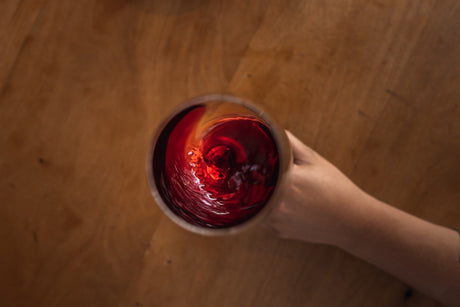
Bored with the same old Pinot Noir? These five alternative red wines share some characteristics of your favourite Pinot but also bring something new to spice things up. Cheers to...
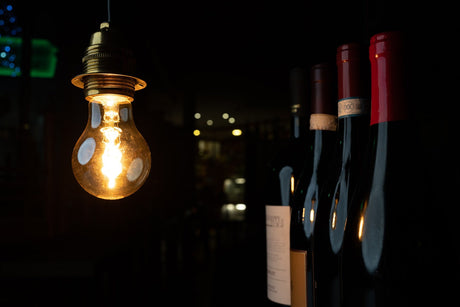
Want to impress your friends with some fancy wine tricks? Look no further! From quick chilling methods to uncorking without a corkscrew, these clever tips will elevate your wine game....
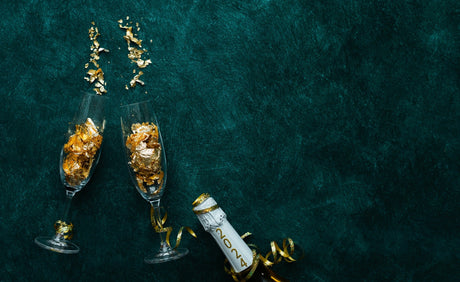
Spice up your New Year's Eve celebrations with our list of the best sparkling wines Australia has to offer. From crisp and refreshing to full-bodied and complex, find your perfect...
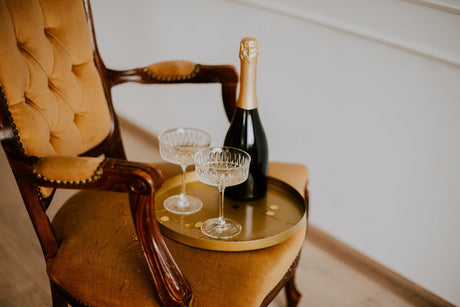
Who says sparkling wine is just for special occasions? Discover 5 fun and unexpected pairings that elevate your everyday Aussie snacking experience. Cheers!
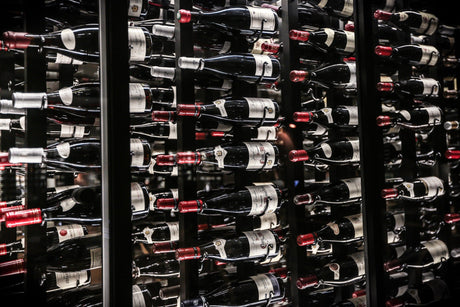
Join us on an adventure to uncover the history and allure behind Australia's love for Shiraz. From its bold flavours to its global recognition, discover why this wine reigns supreme...
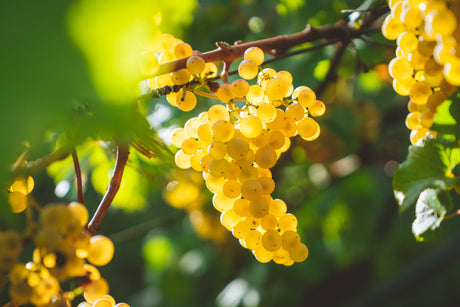
Are you a Chardonnay lover looking to expand your wine horizons? Check out these top five alternative white wines that are sure to impress your palate and liven up any...
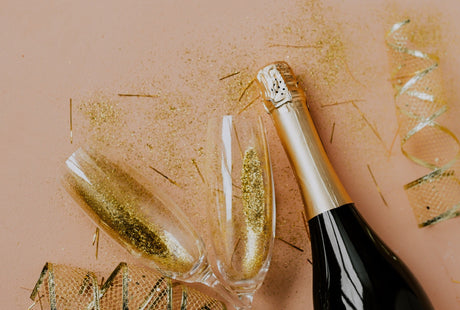
Who says celebrations have to be expensive? Check out these five pocket-friendly sparkling wine suggestions that will make your taste buds dance. Perfect for holidays, special occasions, or just a...
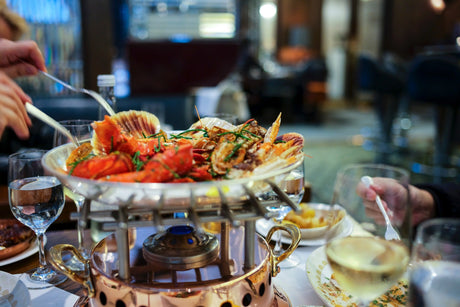
Get ready to sip your way into summer with these amazing wine pairings for seafood dishes! Find out which wines will perfectly accompany all your favourite dishes.